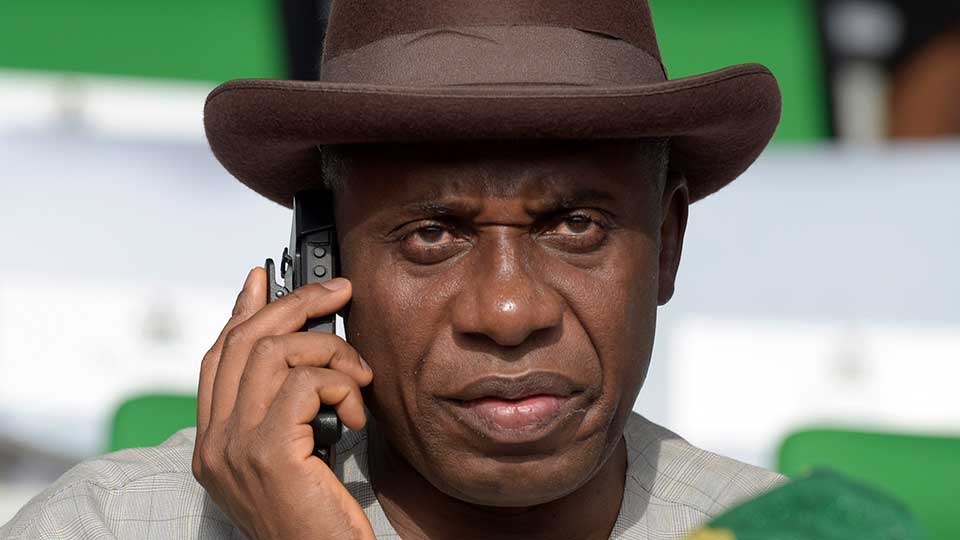By Eric Olander
Nigerian Transportation Minister and likely presidential candidate, Rotimi Amaechi, publicly acknowledged what’s been widely known: that China is no longer in the business of financing massive, multi-billion railway projects in Nigeria.
“We are stuck with lots of our projects because we cannot get money. The Chinese are no longer funding,” he told The Guardian newspaper (Nigeria). “So, we are now pursuing money in Europe,” he added.
That search for development capital in Europe, though, has been underway for the past 8-9 months. Amaechi opened talks last summer with Standard Chartered bank in London about financing $14.4 billion worth of railway projects that Nigeria had originally counted on various Chinese entities to support:
- EASTERN LINE: This is a $3.2 billion reconstruction of the railway that links the port city of Port Harcourt in the southeast with Maiduguri in the north. The project was supposed to have been financed by “a syndicate of Chinese financiers.”
- COASTAL LINE: This $11.2 billion, 1,400 km line aims to link the commercial hub of Lagos to the southeastern port city of Calabar. China Eximbank was expected to finance all or part of the project.
So far, there’s no evidence that those discussions with Standard Chartered have produced any tangible results.
While Amaechi has hinted before that Nigeria can no longer count on Chinese creditors to finance expensive railway projects, his latest comments to the The Guardian are far blunter than previously — an indication that the salad days of easy access to Chinese development loans are now officially over.
This trend has been underway for at least five years. Global overseas development lending by China’s two largest policy banks, the China Exim Bank and the China Development Bank (CDB), peaked in 2016 at $75 billion a year. Just a few years later, according to data compiled by the Global Development Policy Center at Boston University, that figure plunged to just $4 billion.
Those lending patterns, at least regarding the policy banks, have remained largely flat since the beginning of the pandemic in 2020.
It’s very important to note, however, that just because CDB and China Exim Bank have curtailed their lending does not mean that Chinese creditors have stopped lending money to both Nigeria and other African countries to build infrastructure.
Rather, there are new actors and new priorities that have reshaped Chinese infrastructure finance on the continent:
- SMALLER PROJECTS, SMALLER LOANS: Chinese creditors are no longer interested in the multi-billion dollar projects with decades-long return on investment horizons. They are instead focusing on smaller initiatives in the tens of millions and low hundreds of millions of dollars.
- FEASIBILITY & PROFITABILITY: Chinese lenders are now requiring much more detailed feasibility studies for new projects that provide a clear roadmap to profitability. Fee generating projects like toll roads and data centers are prioritized since these kinds of initiatives generate revenue once operational.
- MORE DIVERSE FUNDING SOURCES: While lending from the policy banks is down, state-owned enterprises, private companies, provincial banks and even Chinese VC firms are all much more actively engaged in funding development projects. The landscape of Chinese financiers in the African infrastructure sector is now far more diverse than it was even just a few years ago.
- NEW FINANCING MODELS: In the past, African countries either took out loans from the policy banks (commercial and concessional) or bartered natural resources in exchange for infrastructure as was the case in Angola, DR Congo and Ghana among others. Today, companies like China Harbour Enginneering and China Road & Bridge Corporation are pioneering new equity models and public-private partnerships to build ports and expressways in countries like Nigeria and Kenya.
- ALIGNED WITH NEW PRIORITIES: The outcomes of last year’s FOCAC conference in Dakar highlighted China’s new development priorities that focus primarily on digital and green infrastructure rather than the large-scale transportation projects that shaped so much of the early stages of Chinese engagement in Africa.
Finally, stakeholders in East Africa should take note of Amaechi’s comments in light of a recent meme that surfaced following Chinese Foreign Minister Wang Yi’s visit to the region last month. During a press conference with his Kenyan counterpart, Raychelle Omamo, Wang made a vague reference about how “the region should expand and strengthen, and extend to neighboring countries in a timely manner, the two main axes of the Mombasa-Nairobi railway and the Ethiopia-Djibouti railway.”
This sparked a wave of speculative reporting that China is now finally ready to finance the extensions of these two lines, which he most certainly did not say.
What he did say is that these railways should be extended. But he expressly did not mention who precisely will pay to do so.
Credits | The ChinaAfrica Project

